#my feminist friendly magireco review
Explore tagged Tumblr posts
Text
(An Absurdly In-Depth,) Feminist-Friendly Review of Magia Record
Introduction

Inspired by the feminist-friendly recommendation guides @animefeminist released in June! (Although, uh, longer. So much longer. I got kind of carried away and now it’s September?)
Regarding spoilers:
Magia Record has been available in English since June 25, 2019. However, this review is mostly based on the Japanese version, which concluded its first story arc in March 2019. While the review contains no major plot spoilers for Magia Record, it does have “expectation spoilers” due to discussion of the game story’s overall tone, plot, and themes.
Oh, and also - the game assumes you have full knowledge of the original anime. So this review will contain many spoilers for Madoka Magica.
Summary:
The occasional fanservice can be an annoyance and the main plot ultimately doesn’t make good use of the interesting characters and setting built up through events and backstories, but otherwise Magia Record is a decently fun experience.
Broadly, it comes down to this: if “cute magical girl slice of life (with a few serious backstories)” sounds like your thing, this game probably merits a look. However, if you’re expecting a dark, gripping thriller as in the Madoka Magica anime, it’s likely not worth your time.
Content warnings:
Lots of brainwashing/mind control/memory alteration in the main plot
Some key characters have backstories involving classism, bullying, suicide, child abuse and/or neglect
Nudity in some transformation scenes and the game’s opening
Sexualization of teen characters in some costumes and other in-game art
Some ship teasing between a 19 year old and a 15 year old (although this looks to be changed in the official English translation)
Side characters’ backstories also include:
Ableist tropes (particularly instant magic cures)
Body shaming over height and weight
Mention of an arranged marriage set up while a girl is in high school
An older male boss creeping on his young female employee (she’s rescued by another girl, but the girl then partly blames her for it, yikes).
Those are the ones I know of. The unfinished translations combined with how some story content is locked behind success in the gacha makes it hard to rate literally every story in the game. Please let me know if I’m missing something major, or if you want to know the content warnings for a specific part of the game!
Table of Contents
Tag with entire review in order
Part I: Feminist Relevant Themes
Part II: Other Writing Aspects
Part III: Art
Part IV: Sound
Part V: Gameplay
Part VI: Conclusion
#puella magi madoka magica#pmmm#magia record#magical girls#feminist analysis#my blog organization tags#magia record analysis#my feminist friendly magireco review#madoka magica#magical girl genre#magia record jp#magia record na#my ramblings#alright here goes nothing#also this doesn't account for new content from last night#because look I’ve rewritten this so many times#it is Done and Im Posting It
31 notes
·
View notes
Text
Conclusion
What is this review?
<-Previous (Gameplay)
You already know the conclusion I came to about this game - it’s the summary at the start of the review. Instead, I want to talk a little about where I’m coming from, and why I ultimately chose to write and post 10+ pages analyzing a silly free to play mobile game.
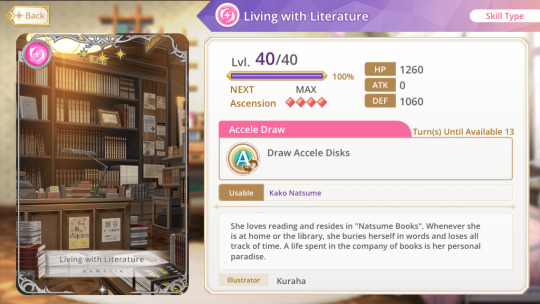
The meta level
As I said in the intro, I really love the work Anime Feminist and its associated writers have been doing. Even though I’m not a real writer myself, I wanted to try doing something like it!
Madoka is also special franchise for me personally. It’s the series that got me into anime, and it was the first series I watched that made a lesbian pairing I shipped into canon.
But from a feminist perspective, Madoka Magica’s influence on the larger magical girl genre has almost been wholly negative, unleashing a torrent of grimdark clones that drown out the message of empowerment that used to be so central to the genre.
So, after nearly a decade of ruining magical girls, I found it deeply ironic that Madoka Magica’s big comeback is a much more typical lighthearted magical girl story. And I’m curious if other people will see it that way.
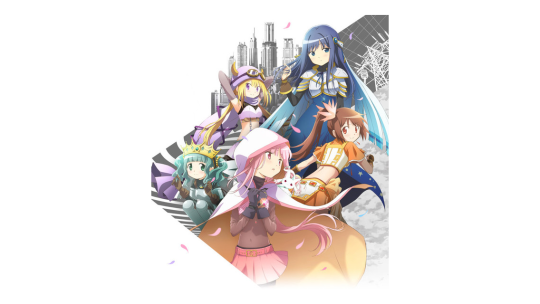
I heard there’s going to be an anime?
I also write this just after the release date for the anime adaptation was announced.
As such, with this timing, hopes and fears are at an all time high. Can the anime rewrite the game to be better? Or will the exodus of talent at SHAFT and the already shaky story doom the first Madoka Magica anime in years as well? (Help us Kuroe, you’re our only hope!)
In either case, I wanted this review to be out before the anime airs, so there will be record of what my opinion was like before that changes everything. And so when people ask what to expect from the anime from a feminist standpoint, they have at least one longform story analysis / review of the game to point to.
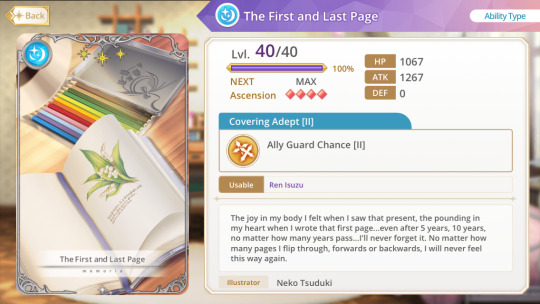
Last Thoughts
I started writing the disorganized notes that eventually coalesced into this review a few months before the game’s first anniversary in Japan - only to get sidetracked so long by other projects that it’s now more than a year later. But that delay is probably a good thing, giving this piece a longer term perspective.
My two years on playing on the Japanese server have been a rollercoaster of ups and downs - swinging between frustration that the game wasn’t more, to casual enjoyment, to deep obsession, to frustration yet again. Thus, this review has had many changes in tone and motivation. Is this an encouragement for others to play, in hopes of creating more active fan community? Or is it a warning, an attempt to prevent others from facing the disappointments I’ve seen?
Perhaps in the end it is both at once. It’s just me finally sharing everything I’ve been thinking about this game over the years - the good and the bad. Make of it whatever you like.

#puella magi madoka magica#pmmm#magia record#magical girls#feminist analysis#my blog organization tags#magia record analysis#my feminist friendly magireco review#madoka magica#magical girl genre#magia record jp#magia record na#my ramblings#yay i did it!#i did the thing!#now watch arc 2 completely invalidate this review#haha
15 notes
·
View notes
Text
Feminist Relevant Themes
<-Previous (Introduction)
To talk about Magia Record’s writing in detail, it helps to understand how the game is structured.

Magia Record has many story modes:
Main Story: The main plot, centered on new protagonist Iroha arriving in the city of Kamihama to search for her missing sister. Everyone can read this at any time, and new chapters come out every few months.
Another Story: The events of the Main Story, but told from the point of view of the original Madoka Magica cast. Also always available to everyone.
Magical Girl Stories: short stories centered on one specific magical girl - usually they tell the backstory of the girl’s wish. Can only be watched after obtaining the character in the gacha.
Mirrors Story: A very slowly updated story unlocked by completing many player vs. player battles.
Event Stories: Short stories that come out roughly every two weeks. Sometimes introduce a new character for the gacha, sometimes related to a seasonal holiday. Playable to anyone around during the event (and will be stored in the archive afterwards).
Costume Stories: Tiny story snippets involving a character wearing a special outfit. Implemented one year in and unlocked by obtaining both the character and the outfit in question.
Good
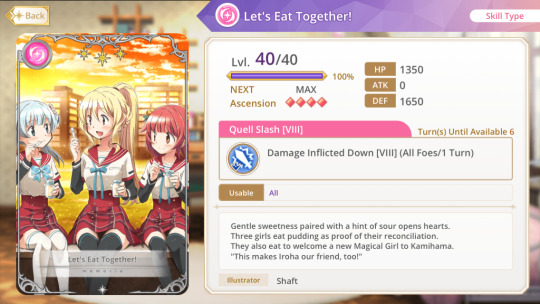
Female Friendship
As with the better side of magical girl media, the game’s biggest feminist plus is its complex female characters and focus on female friendships, including some great examples of female mentors and role models. The mechanics of the setting are even tweaked to facilitate this - gone is the TV series’ lonely, competitive system that isolated girls from each other. Instead, in present-day Kamihama, witches are so strong and plentiful that magical girls are better off forming teams to support one another.
While this change arguably waters down some of the thematic weight of the original (in that this isolation was another example of how Kyuubey’s system is an easy metaphor for other oppressive systems), I find it a worthy trade-off. Allowing for magical girl teams to exist results in much richer possibilities for interactions between characters, especially welcome in a sprawling game with far more narrative content than a one-season anime.
And the game takes good advantage of this - no two magical girl teams are exactly alike, both in terms of internal dynamics and how they interact with other teams.

Doppels
The main gimmick of the game’s story is the existence of “doppels” - a mechanic where a magical girl partially transforms into her own witch to unleash a powerful attack. And from gameplay to story to art, doppels are excellent. They look cool and they’re rewarding to unlock and use in game. From a feminist perspective, I also love the idea of reclaiming witches, the “adult” form of magical girls, into a source of salvation and empowerment for girls* instead of a curse. On a meta-level, it echoes a common magical girl trope of the character transforming into an older version of herself, while specifically to Madoka Magica, it’s a creative way to dismantle the misogynistic implications of Kyuubey’s system!
(*There are supposedly drawbacks to doppels, but that bit of setting mostly serves to make them a ~dangerous forbidden technique~ that shouldn’t be overused.)
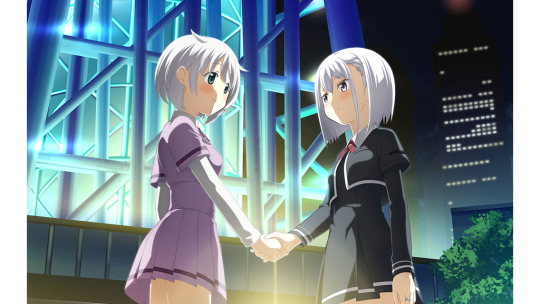
Struggling against class prejudice
The tensions between different wards of Kamihama are a key component of the setting, and affect many character interactions. One aspect the Magical Girl Stories are good at is showing how arbitrary and hurtful this discrimination is, and how difficult it is to overcome prejudice once it has become entrenched. It’s made abundantly clear that Kamihama would be a better city without these attitudes - the question is, how to get there?
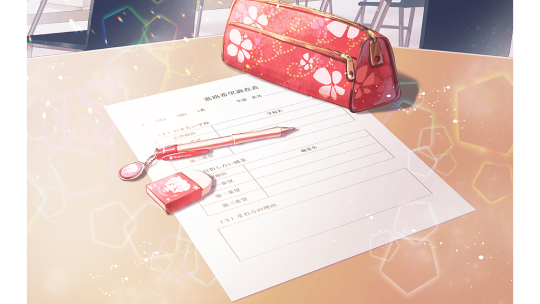
A variety of careers
Several girls make wishes or have backstories centered on what they want to do when they grow up. What’s especially neat is that most girls ask for the opportunity to follow their passions, rather than having a talent magically granted to them - thus avoiding the pitfall of having a female character’s abilities originate from a power granted by a male character.
The range of career interests depicted isn’t as amazing as it could be (In a cast of 80+, I would love to have more than three girls representing STEM), but there’s some decent variety. Many girls aspire to take over their parents’ family business, for example.
And even some characters who follow more seemingly feminine careers (a model, a chef, an artist, etc.) have serious narratives centered on the skill and effort needed to succeed in those highly competitive fields, which is quite refreshing to see.
Mixed
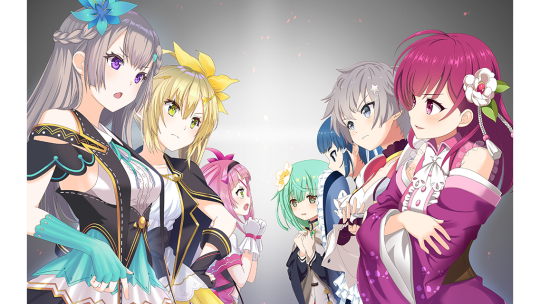
The many different ways to be a girl
The nice thing about having a large cast of female characters is that it gives plenty of opportunities to show how all of these characters are different. And in general, Magia Record does very well on this front! One aspect I’ve particularly been enjoying is the how the cast has widely varying tastes in fiction. Yes, there are girls who like dreamy romances, but there are also girls who bond over their shared love of a hotblooded shounen series!

Where this falls down somewhat is an overuse of “but look, she has a secret feminine interest.” Sometimes this plot can work, if coming at it from the angle that superficial judgments can be misleading, or that there’s nothing wrong with having feminine interests. But when all the more masculine-presenting girls end up with a hidden fondness for stuffed animals, the sheer repetition becomes rather irksome. It’s as though the game feels the need to insist “but look, she really is a girl!” because the audience wouldn’t believe it without such a trait.
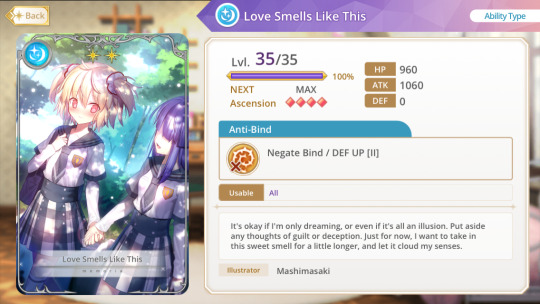
LGBTQ+ characters
In terms of LGBTQ+ content, the game feels rather similar to the original anime and other Madoka spinoffs. That is to say, there are tons of shippable f/f pairings that get teased, but as of the present, only one new playable character (and a tiny sample of minor characters) are explicitly confirmed to be lesbians. No trans or otherwise queer characters either, unfortunately. (Though of course that’s not to stop a good interpretation or headcanon!)
However, as a whole, the game is oddly averse to showing the characters in active, healthy relationships. One of the early frustrations I had with the new character’s portrayal was that the game’s one mutual gay relationship was never directly shown on-screen and gets broken up in favor of more ambiguous teasing. That being said, all the het relationships are treated similarly, either never being confessed and requited or never getting shown on screen. So… I suppose there’s not actually a double standard here, but players hoping for lots of canon yuri content might end up a bit disappointed.

Also, a note on Homura specifically - this game’s version is “glasses Homura,” who hasn’t realized she’s in love with Madoka yet. So despite what you might expect given Rebellion, in Magia Record there’s nothing beyond heavy hints and ambiguously cute scenes between her and Madoka.

Characters with disabilities
A few characters in the game have difficulty speaking. It’s not made clear if this is a speech impediment or something like social anxiety (or autism - I know I’ve seen headcanons for that). There is some depiction of these characters getting bullied, but in each case the character ultimately finds a group of friends who love and support them as they are.
After two years, now there is technically a magical girl who uses a wheelchair. (And it’s a cool custom wheelchair too!) Unfortunately I hesitate to count this as a full positive, because shortly after she appears in it, the character becomes unable to transform and fight for an unrelated reason, so we haven’t seen her in battle since. But who knows - the story’s still moving forward on the Japanese server, and there’s likely to be more content with her in the future.
At the end of the day, though, this is a setting with magic wishes and healing effects. Thus, it’s very common for girls to wish to cure someone’s illness, or to use their abilities as a magical girl to cure themselves, which can easily fall into ableist tropes.

College age magical girls
Yes, really! Although even the oldest characters are only nineteen. However, there’s also a subplot about how two of the nineteen-year-olds are losing power because they’re older, which… hm. The message that we all need to accept passing the torch to the next generation is generally a valuable and good one. Aiming it at older teen girls just on the verge of adulthood is where the implications nosedive into unfortunate. Young girls already get far too many messages that their worth is entirely dependent on their youth/beauty/innocence and that it’s better to stay a “girl” than to be a fully grown “woman.”
The entire reason it’s exciting to see college age magical girls in the first place is that even now, it’s rare to see adult women as protagonists in these types of fantasy adventures. By introducing these young adult characters only to caveat their inclusion with“they’re getting too old to be here”, it puts a very sour note on what’s otherwise a welcome expansion of the Madoka Magica universe.
(It’s also hilariously contradictory to other spin offs in the Madoka Magica franchise, including the implications of the anime canon itself, so… whoops?)
Bad

Lack of diversity
(Particularly racial diversity.)
The only non-Japanese magical girls are from the pre-existing Tart Magica spin-off set in medieval France… and Meiyui. (And maybe Alina.)
Meiyui is a complicated case - her family has ties to both Japan and Hong Kong. Meiyui herself is a fun character, but she also ticks a lot of the checkboxes for a Japanese stereotype of a Chinese person (a la Xiao Mei in Fullmetal Alchemist). As a white person only familiar with US culture, it’s not my place to make a judgement call here, but I’d love to hear from someone who knows more!
The largest disappointment, though, is in wondering what might have been. The Madoka Magica anime implied that there are magical girls all over the globe from every different time and culture, so the game’s narrow focus on one modern Japanese city greatly limits the setting from its full potential. And even within that limitation, the sheer homogeneity of the new cast is starting to get awkwardly same-y.
The arc two’s logo teases what might be girls from several other backgrounds, though, so perhaps this will improve in the very near future. Of course, success will depend on the writers’ abilities to handle other cultures. Which, when given the example of Meiyui, might actually be cause for concern...

Revolutionary Girl Utena, this ain’t
In a game full of decent-to-good backstories, you’ll sometimes hit an unfortunate and very disappointing outlier.
My personal least favorite is the victim-blaming one mentioned in the content warnings. Another low point is a story where a girl frantically diets as a response to another girl’s comments about her weight.
Then there’s the backstory the above picture comes from. It involves a girl who has to drop out of sports because her next school only has a boy’s team - and instead of challenging this situation, it’s the inspiration for her to discover she’s actually happier as a cheerleader anyway. Hm.
This last case is actually pretty emblematic of the game as a whole. Whoever’s doing the writing (the credited scenario team is four people, and from the names at least two might be women?) mostly seems to mean well, but they occasionally step hard into the -isms that come from not actually thinking about the problems with the status quo.
So the game isn’t typically hateful, but it doesn’t push the envelope in any revolutionary directions either. As a result - and it feels weird to say this, but - I really miss having Urobuchi as the writer. Sure, his writing had its own problems, but in comparison, it was at least genuinely thought-provoking. The way that even the adult female characters got complexity and screentime, that whole conversation between Sayaka and the misogynistic men on the train, the compelling exploration of consent and determination that underlies the whole anime – even six years later, these aspects hold up and stand out.
Magia Record is an inversion – far more pleasant on the surface, but without the backbone and depth that made the original so thematically intriguing despite all the suffering.
Next (Other Writing Aspects)->
#puella magi madoka magica#pmmm#magia record#magical girls#feminist analysis#my blog organization tags#magia record analysis#my feminist friendly magireco review#madoka magica#magical girl genre#magia record jp#magia record na#my ramblings#haha this section is so long#nothing else even touches it#and even then there’s so much other stuff I could rant about lol
16 notes
·
View notes
Text
Gameplay
What is this review?
<-Previous (Sound)
The biggest problem with Magia Record is that it’s a gacha game. The biggest problem with gacha games is that they’re awful, soul-sucking trash that lock missable content behind randomized, exploitative, and absurdly expensive microtransactions.
Thus, while, Magia Record could be quite a bit worse than it currently is, it’s definitely not a good game by any metric of ethical game design. Effectively, it gets an F by default, so comparing it to non-dumpsterfire-genre videogames is rather futile. Either you’re willing to deal with the devil that is gacha or you’re a smart person who avoids them.
A more useful comparison is how Magia Record holds up amid its peers, so that’s the angle I’m taking here.
Good

Rares not necessary
While there are some units that definitely make the challenging battles easier, the game’s story missions are never locked behind a difficulty barrier that effectively requires you to have a limited or rare character.
Eventually, some of the lower rarity characters get updates which make them competitive with the highest rarity units. There are also quite a few “free” characters that can be obtained in ways that don’t require gacha rolls or premium currency.
Best of all, literally every character can be usable and even useful if you want them to be. And yes, that includes the common 2-stars and even the joke characters! It’s a game that very much encourages you to play with whatever magical girls are your favorites.

UI
Convenience features are plentiful and significantly help alleviate the tedious parts of the grindy gacha game experience. In particular, there’s not just an auto-battle feature, but you can also set different aspects of your team’s AI and run the battles at 2x speed. Memoria (equip item) management originally started out a little difficult and unwieldy, but became easier with each new tweak to the system, to the point where it’s quite smooth on the current Japanese version.
In general, the UI is excellent. I wouldn’t usually consider this a notable feature, but when it’s simple to remember and navigate a game even in a different language, that’s pretty good.
Mixed

Mirrors
“Endless Mirrors” is the name of the game’s asynchronous player vs. player combat system.
So yes, the bad news is that there is a player vs. player combat system, and you need to play it to unlock some story content. Since this is a gacha game with fancy powerful rare characters, of course this mode (and the occasional player vs. player ranking tournaments) are pay-to-win by their very nature.
Thankfully, even if you don’t have the best units, it doesn’t actually matter besides bragging points. Scoring high in the tournaments, for example, only gives you a badge on your profile. But even losing battles will still net you some of the associated currency and slightly increase your progress to the next story unlock.
And, as mentioned above, several common units are able to hold their own in this mode. Thus, paying makes winning easier, but you don’t actually need to pay to have a pretty respectable win ratio or tournament rank.

Overall Gameplay
The basic battle mechanics are easy to learn, but still have some strategic depth to them. Optimizing team synergies isn’t necessary in anything but player vs. player combat, but can be fun - the interplay between stats, elements, equipped effects, and other mechanics makes team building quite satisfying when you figure out a winning combination with the units you want.
Where this falls down is the sheer amount of grinding required to progress. The convenience features mentioned above help, but there’s no getting around how the game expects you to spend hours and hours using auto-battle to farm event currency and rare material drops. Figuring out a good team setup for a battle is only a fraction of the game, far eclipsed by mindlessly repeating that same battle over and over while you hopefully multitask with something else.
If the grinding is the lowest gameplay point, though, the Connect mechanic is probably one of the highest. Using a “Connect” allow one character to boost a teammate, and the rare character-to-character specific bonuses are a nice bit of gameplay and story integration I wish the game used more. Unfortunately, other than that...
Bad

There’s little relation between story and gameplay
The first major gameplay disappointment for me is that Magia Record’s story is decent, and Magia Record’s battle system is decent, but the two only have a passing relation to each other. The game’s actual mechanics do very little to support the story, and vice-versa.
Sometimes this can reach pretty silly levels. You can defeat story bosses with a team that includes multiple versions of that same character, and that’s just the start. Your roster of characters does not exist in the story’s world, and in fact would be literally impossible in many cases.
While I consider this scenario better than having gameplay that strongly supported the story but were a chore to play, it’s yet one more missed opportunity in a game full of them.

Gacha Rates and Limited Time Content
The gacha rates are quite bad (1% chance for the highest rarity units), but including a pity counter (the 100th role is guaranteed to be a highest rarity unit) makes it not the worst system out there.
Limited-time character gacha events are present and these events become more frequent as over time, too. Luckily, most of these characters have gotten at least one rerun, but it’s still a frustrating and manipulative system.
Prices for the premium currency are also ridiculously high, which is to say, I’ve heard they’re roughly the same or a bit higher compared to other games in the genre. However, you can amass quite a bit of premium currency simply by patiently stockpiling over time.
That being said, there are also special items (such as a guaranteed chance to pull a random highest rarity character) that even the premium currency won’t let you buy. Those items can only be bought with paid premium currency, which is definitely not a confusing system at all.

Gacha-locked story content
Compounding the awful that is the gacha mechanics, by far the worst gameplay feature is that you need to obtain a character to get access to their Magical Girl Story. Since these backstories (and some Event Stories) are both some of the best written content in the game and also sometimes necessary to completely understand everything in the Main Story, this is a bad, bad system.
What makes it even more annoying is that the Main Story-relevant content isn’t even on characters that are easy to get - no, it’s on rares, seasonal event stories, and in some cases, seasonal limited rares that happened half a year before becoming story-relevant. Ouch.
Youtube and wikis are your friends.
Next (Conclusion) ->
#puella magi madoka magica#pmmm#magia record#magical girls#feminist analysis#my blog organization tags#magia record analysis#my feminist friendly magireco review#madoka magica#magical girl genre#magia record jp#magia record na#my ramblings#hey if it's a bragging rights reward#that means I’m allowed to brag about it right?#might as well enjoy S3 while I can#before I get obliterated by darcs next ranking
9 notes
·
View notes
Text
Sound
What is this review?
<-Previous (Art)
Good

The Soundtrack ...is very good! The new songs might not be quite as amazing or memorable when compared to the anime originals, but they’re still very nice. And overall, the music team did a great job, managing to blend songs from the original series, Rebellion, and their new music into a smooth experience.
Also, extra bonus points for how the game uses Sis puella magica. In the anime, this piece represents Kyuubey and his contract - a deal that’s engineered to look shiny and attractive, but which actually conceals an abusive system underneath that preys on anyone who takes the offer. Those who fall into the system end up trapped and dependent on it, a plot point I’ve seen some commentators compare to a form of addiction.
In the game Sis puella magica is… the gacha unveiling track.
Parallels? What parallels?
Mixed

Character voices
I’ll be honest - before playing, the home screen quotes were one of the things that made me most nervous about the game. There’s nothing that makes me more uncomfortable than a game full of female characters implying the cast all have a romantic interest in the player. Or, alternatively, that the player is somehow an authority over the characters, like a master or manager.
Thankfully, Magia Record puts the player at the same level as the magical girls instead of being their boss. Moreover, the dialogue here has most of the characters act friendly towards “you”, but that’s as far as it goes. Heck, I could see this being appealing to actual young girls, since it makes you feel like you’re part of a magical girl team!

Having a fully voiced story is also quite a treat, especially when the cast brings in so many big names! The written dialogue is character-heavy enough that it doesn’t especially need to be voiced to work, but hearing it out loud is fun, especially when the villains start getting hammy.
Apart from the coolness, factor, though, voicing the main plot doesn’t actually improve its larger problems, and not all the performances are equally strong. Iroha in particular is a rather weakly written protagonist, and that’s only compounded by her lackluster vocal performance.
So, once again, the downsides here are partially a case of the main story living up to its potential. If only they’d voiced the character backstories instead!
Next (Gameplay) ->
#puella magi madoka magica#pmmm#magia record#magical girls#feminist analysis#my blog organization tags#magia record analysis#my feminist friendly magireco review#madoka magica#magical girl genre#magia record jp#magia record na#my ramblings
9 notes
·
View notes
Note
I read your Magia Record review and I have to say it's pretty good and I definitely agree with it from what I've played so far in the NA version. It's a bit disappointing to hear the story falls apart in the last third though, hopefully the anime adaptation fixes that.
aaaaa, omg omg thank youfor reading my review! (And thank you toeveryone else who read or liked or reblogged it too even despite the tumblrhiccup!
It’s also cool to hearyour agree with it! I’ve been thinking aboutthese things to myself for a long time now, and it’s so great to know I’m not actuallyalone.
(Of course, if anyonedisagrees, that’s valid too! I welcomeany kind of constructive comments or critique.)
And oof, yeah, the lastthird of the main story is pretty rough. It’s not all bad, though. There’s still some very good moments left –even as late as Ch10! – but I’m really not looking forward to re-experiencingthe slog of all the Ch8-9 battles. (Seriouslythose chapters are way too long and have WAYYYY too many nodes on top of it D: )
I’m with you 100% on the anime adaptation, and I havepretty high hopes for that right now! Simplyreworking the pacing and slightly tweaking events and character motivations couldmake a surprising amount of difference, I suspect. And with InuCurry in the director’s chair,that’s about the best news we could have hoped for - if nothing else, the eventstories he’s written suggest he genuinely cares about the setting andcharacters.
#magia record#magia record analysis#magia record na#magia record jp#my feminist friendly magireco review#my ramblings#replies#seriously thank you!!#katiethetransbian
7 notes
·
View notes
Text
Art
What is this review?
<-Previous (Other Writing Aspects)
Good

Gekidan InuCurry is back!
Half of InuCurry (specifically, Doroinu) returns for the game, and his designs continue to be creepy, cool, and just plain awesome. Witches are just as unsettling and beautiful as in the anime, and new additions like doppels can sometimes be even more so. Meanwhile, the transformation sequences he storyboards are the best in the game. And he also did a few magical girl character designs - they’re definitely something to look forward to, for anyone who hasn’t been spoiled on them already!
Mixed

Character card art
Good news: If you want to, it’s easy to have a full team of characters with non-fanservice-y outfits. Heck, it’s even pretty easy to have a full team of magical girls designed and illustrated by women!
Furthermore, when the girls are leveled up, their outfits don’t change – instead, the art gains more elemental effects and dynamic poses rather than making their clothes devolve into I-can’t-believe-it’s-not-lingerie. As a result, girls like Felicia might not have the best costumes, but since their final art prioritizes looking badass over fanservice, I find I’m not as bothered by the original design. (Your mileage may vary, of course.)
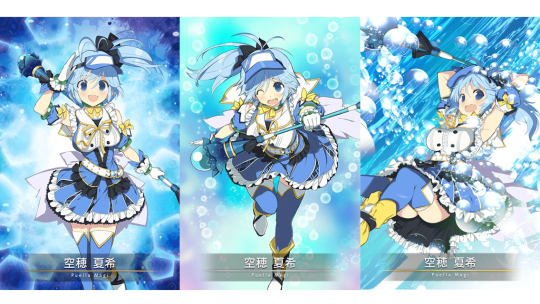
That being said, while you can choose which art you want to use for each character… there are also some pretty darn bad illustrations. And there are some girls who just don’t have a good option.
(For a more in-depth discussion of the character card art, see my addition to @otapleonehalf’s post here.)

Extra costumes
One usually nice addition to the game is alternate outfits for the character you set on your home screen. While some of the outfits are very fanservice-y (swimsuits gonna swimsuit), many are also unproblematic cute and fun. Plus, since these aren’t new gacha characters and the costume unlock sticks even if you only obtain the character later, they’re a bit more friendly to collect for nonpaying players.
Live2D animations

This is the first time I’ve played a game with the Live2D engine, and I’m impressed. The animations are rather “tween-y”, but they have lots of secondary motion and some great character details. Character traits like Kako (above) and Sana’s shyness or Tsuruno’s restless energy are sold just as much through their unique animations as through their dialogue, which really helps the characters feel like people rather than archetypes.
Also, despite what you might expect from a Madoka Magica spin-off, there are no hurt/defeated portraits for the cutscene models. The battle sprites have alternate poses for low health, but there is no clothing damage or blood.

Unfortunately, that Live2D animation I mentioned? Also includes jiggle physics on the girls with larger breasts. Thankfully, only a few girls have it to a noticeable degree, but the ones who do… hm. The effect isn’t unrealistic, I suppose, (that is, not weird bouncing whenever the character breathes, just secondary animation when the character makes a large or sudden movement), but I still wince whenever I see it. You couldn’t afford more than one body type or skin color, but you can afford this? A bad sign for the game’s priorities.
Bad

Transformation sequences
Wow, it’s weird to say this about a magical girl franchise, but honestly? The transformations are probably the worst part of the game. It sometimes feels like they just exist as an excuse to see leering closeups on some girls. (Ironically, the nudity that got altered for the Taiwan and North American versions was one of the less objectifying examples.)
And even beyond that, they’re boring! Most girls pose, get a brief sparkle of their associated element and bam, that’s it. Plus or minus some boob jiggle of course. (sigh)
SHAFT really let everyone down here, and it’s another place where it’s tragic to consider what could have been.
However… as I mentioned above, if you get lucky enough to roll one of the original series magical girls, you’ll get a taste of that possibility. Those sequences were mostly handled by InuCurry, and the difference is night and day - they’re creative and delightfully surreal new transformations. If only the rest of the game had lived up to that standard…

Lack of body diversity
One of these girls is a semi-famous model and the other spent her life training to master the naginata - good luck guessing which is which based on their body types, since below the neck, they’re nearly identical. And these two are not alone - every girl in the game has this Barbie doll-esque frame, with only small variations for height and (you guessed it) breast size.
On top of that, there’s only one, very pale, skin tone. Boo!
Thus, while I can understand the resource argument for this reuse, it’s to such an extreme that the result ends up looking off-puttingly lazy in a game that is otherwise has a lot of care and attention to detail.
It also actively hurts the story. There are characters who are said to be athletes, or who are sickly and spent a long time in the hospital, and so on. Yet unlike the animations, the actual designs work against those characterizations, since everyone is the exact same level of generic cuteness. Probably the most blatant example is when a character is stated to be beautiful in dialogue - for all we know, maybe she’s actually plain and it’s the person talking who has a weird opinion!
Next (Sound) ->
#puella magi madoka magica#pmmm#magia record#magical girls#feminist analysis#my blog organization tags#magia record analysis#my feminist friendly magireco review#madoka magica#magical girl genre#magia record jp#magia record na#my ramblings#sorry for bad gif quality#this is my first time making them!#D:
5 notes
·
View notes
Text
WOAH what I just checked my activity log after a week and now animefeminist and even more people reblogged my Magia Record review and I’ve got a ton more notes now and !!!!!!!!!!!!!
Thank you so much everyone!! <3 <3 <3
2 notes
·
View notes
Text
Other Writing Aspects
What is this review?
<-Previous (Feminist Relevant themes)
Good

Tone
When Magia Record’s writing is strong, those strengths are usually more in line with a Cute Girls Doing Cute Things anime or (dare I say it) a traditional magical girl show – it succeeds most when it’s creating heartwarming scenes of friendship and found family. However, that’s not to say there aren’t dark or sad moments. But even the darker storylines are almost always narratives of the girls healing from trauma rather than meeting a tragic end. As a result, the game’s usual tone is much lighter and softer, missing the crushing and relentless despair that marked the original series.
Whether that tone change is preferable is of course entirely up to the reader, though. But regardless of my own fondness for the anime’s grim tone, I do feel the game was aiming to be a lighter experience overall, and that it more or less succeeded at that goal.
Mixed

Humor
Like the tone, the game’s humor is very CGDCT-esque. Expect cute fluff and silliness, which sometimes works quite well (anything that involves slice-of-life with the villainous characters becomes very funny precisely because of the contrast), but it can sometimes just fall flat.

I will note, however, that there are a couple of mild boob/underwear/innuendo jokes, and every time one of those comes up, I always find myself sighing. In two years, nothing’s crossed the line into assault or overt harassment yet, so I have my fingers crossed… although I’m too cynical to expect it won’t happen eventually.
Another miss is the weird tone/theme inconsistency that happens with some offputting running gags. For example, in the vast majority of the game, classism is treated seriously, but then one character is often reduced to a stereotype and jokes about how poor she is. Meanwhile, the backstories usually treat suicide very seriously and tastefully, but then another character has a running joke where she says she’ll kill herself at the slightest disgrace (it’s comes off more seriously in the English translation than the original Japanese, though). And then there’s that whole issue with the college aged magical girls... “Child soldier forced to grow up too fast is constantly told she can’t be a kid anymore and will lose everything she currently loves as an adult” is not actually as funny as the game seems to think it is.
Instead, it’s rather jarring.
Bad

Main Story
The game’s Main Story is basically the definition of “wasted potential” - it starts well and introduces a cool setting, lots of intriguing new ideas and worldbuilding, and even teases some good characters which are expanded on in events and side stories.
Unfortunately, that all falls by the wayside about two-thirds of the way through, when the pacing grinds to a halt and narrative focus suddenly splinters. Plot points are either repeated or don’t go anywhere. As more and more characters get added, the interesting and complex magical girls you meet in the backstories are reduced to a generic, undifferentiated heroic mass fighting equally generic villains who do bad things Because Plot.
Moreover, the writers seem afraid of actually changing the status quo or developing their characters, particularly those from the original anime.
All this adds up to wear down one’s emotional investment in the main story. Thankfully, said main plot is actually only a fraction of the narrative content in the game. All that is to say: this is definitely not a tightly written, thematically elegant story on the level of original anime. It is, at best, a setting ripe for discovering likeable characters and plucking fanfic ideas.
Next (Art)->
#puella magi madoka magica#pmmm#magia record#magical girls#feminist analysis#my blog organization tags#magia record analysis#my feminist friendly magireco review#madoka magica#magical girl genre#magia record jp#magia record na#my ramblings
4 notes
·
View notes